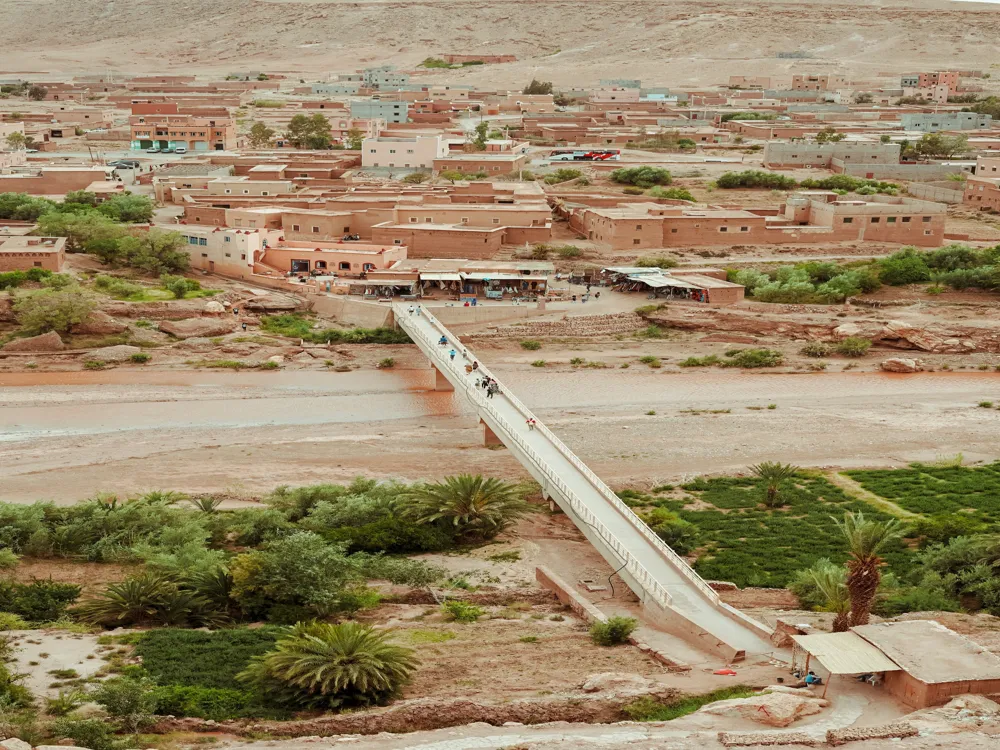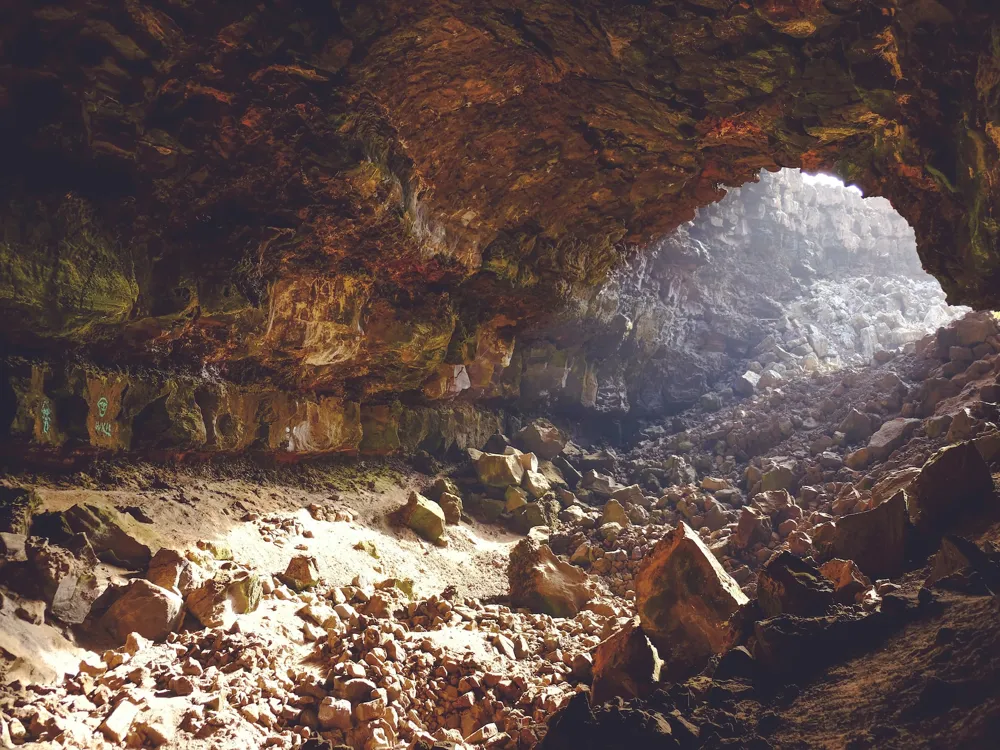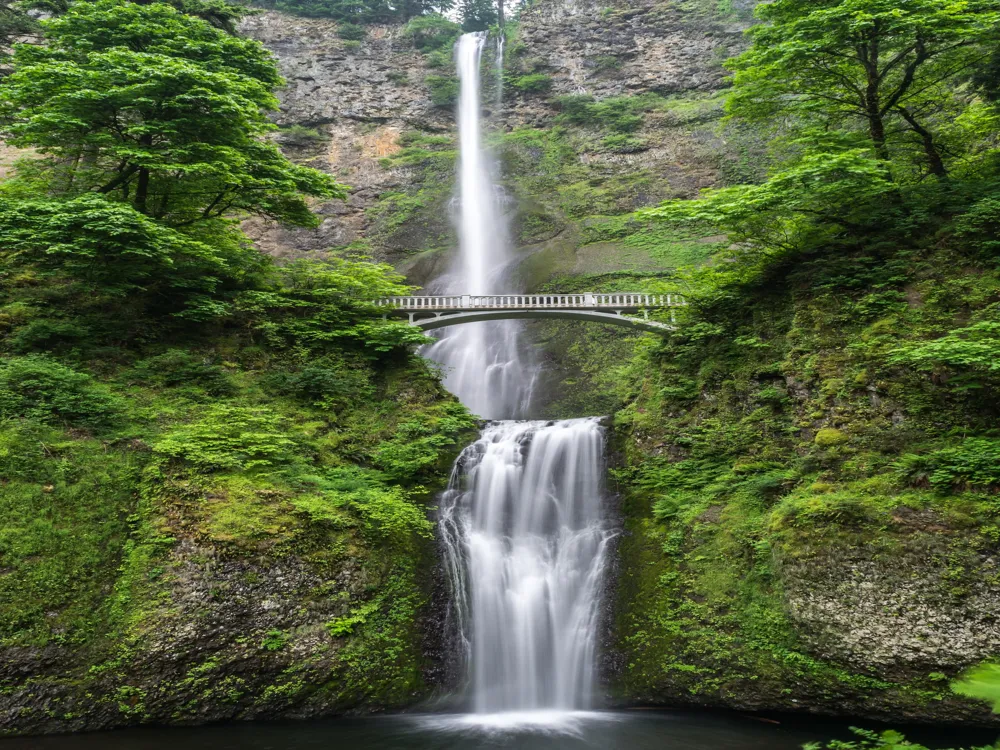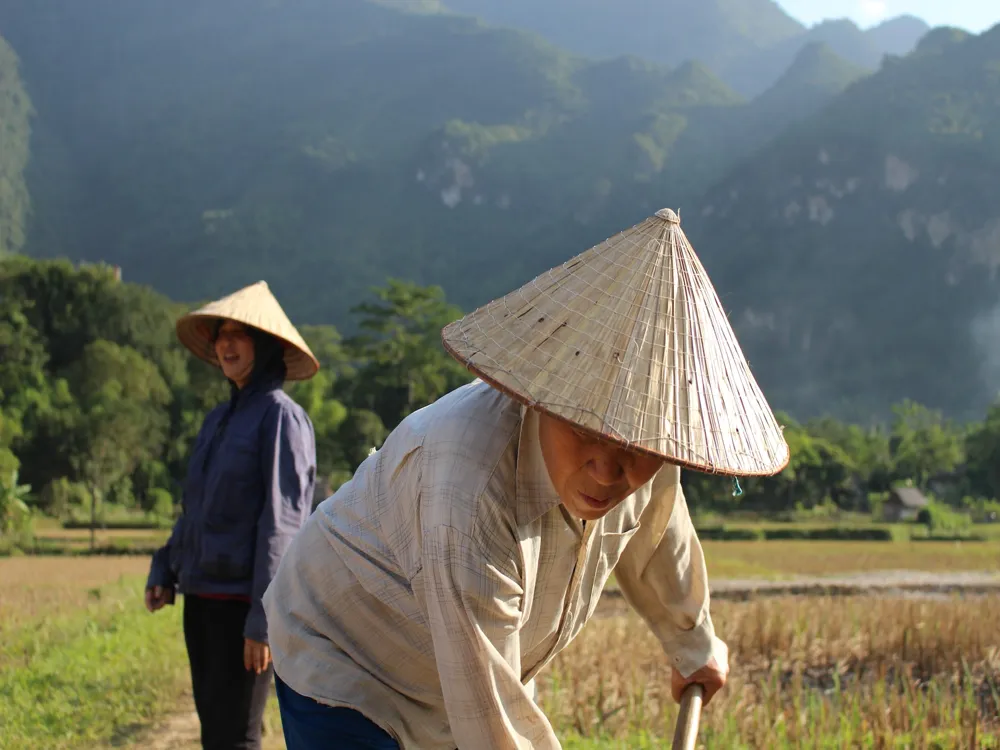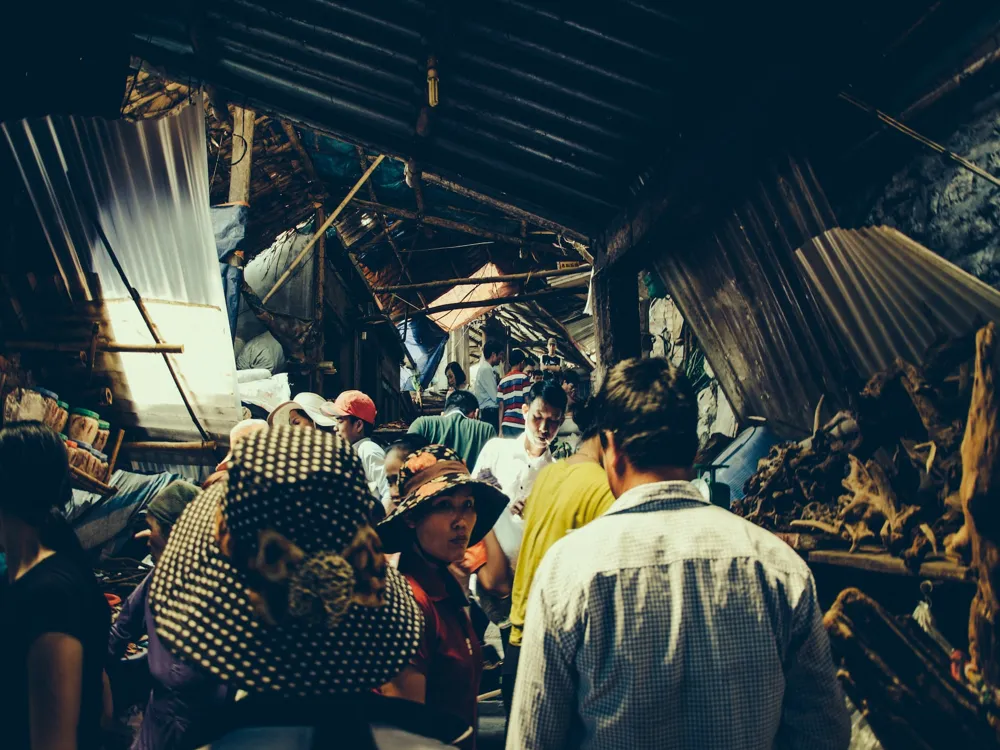Pu Luong Nature Reserve, a hidden gem located near Mai Chau in the northern part of Vietnam, offers a breathtaking landscape that is often overshadowed by the more famous Ha Long Bay. This nature reserve is a paradise for nature lovers, trekkers, and those seeking a tranquil escape from the hustle and bustle of city life. Encompassing an area of over 17,000 hectares, Pu Luong boasts a diverse ecosystem, with rich flora and fauna, and is inhabited by ethnic minority groups who maintain their traditional lifestyles. The reserve's landscape is a picturesque blend of lush valleys, verdant hills, and majestic mountains, which are home to an array of wildlife including rare species like the clouded leopard and the Asiatic black bear. The biodiversity here is remarkable, making it an ideal spot for eco-tourism and wildlife watching. The beauty of Pu Luong lies not only in its natural landscapes but also in its cultural richness. The traditional stilt houses, terraced rice fields, and the way of life of the local communities add to the charm and authenticity of the experience. One of the most striking features of Pu Luong is its terraced rice fields, particularly beautiful during the planting and harvesting seasons. These fields, carved into the hillsides, are not only a testament to the agricultural skills of the local people but also a stunning visual spectacle. Visitors to Pu Luong can enjoy a range of activities from trekking and cycling to bird watching and cultural exchange. The reserve offers various trekking routes that vary in difficulty, allowing both novice and experienced trekkers to explore its beauty at their own pace. Pu Luong Nature Reserve is a haven for biodiversity enthusiasts. The area's rich flora includes several rare and endemic species, contributing to its status as a significant site for botanical research. The fauna of Pu Luong is equally impressive, with a variety of mammals, birds, reptiles, and insects. This diversity not only adds to the ecological value of the reserve but also provides ample opportunities for wildlife observation and photography. The cultural aspect of Pu Luong is deeply intertwined with its natural environment. The ethnic minority communities, primarily Thai and Muong, have a deep connection with the land. Their traditional practices, customs, and festivals are a window into the rich cultural heritage of the region. Visitors can experience this cultural richness firsthand by staying in homestays, participating in local activities, and enjoying traditional meals prepared by the locals. Eco-tourism is a growing trend in Pu Luong, with an emphasis on sustainability and conservation. The reserve offers eco-friendly accommodation options and encourages visitors to engage in activities that have a minimal impact on the environment. This approach not only preserves the natural and cultural heritage of Pu Luong but also contributes to the socio-economic development of the local communities. The architecture in Pu Luong Nature Reserve is a harmonious blend of traditional and sustainable design principles. The structures in the reserve, predominantly made by the local ethnic groups, are a reflection of their deep understanding and respect for the natural environment. The most iconic architectural feature in Pu Luong is the stilt house, a traditional dwelling that is elevated above the ground on wooden or bamboo stilts. These houses are not only adapted to the mountainous terrain but also to the climatic conditions, providing protection against floods and offering natural ventilation. Stilt houses in Pu Luong are constructed using locally sourced materials such as bamboo, wood, and thatch. The design of these houses is a testament to the ingenuity and resourcefulness of the local communities. The houses typically have a large communal living space and smaller private rooms, reflecting the communal lifestyle of the ethnic groups. The roofs are steeply pitched, an architectural feature that helps in water drainage during the heavy rains of the monsoon season. Besides stilt houses, Pu Luong also features granaries, communal houses, and religious structures that exhibit traditional architectural styles. The granaries, used for storing rice and other crops, are elevated structures similar to stilt houses, protecting the harvest from pests and moisture. Communal houses serve as a gathering place for the community, hosting meetings, ceremonies, and festivals. These structures are often adorned with intricate carvings and decorations that hold cultural and spiritual significance. In recent years, there has been a growing emphasis on sustainable architecture in Pu Luong Nature Reserve. New constructions, including eco-lodges and tourist facilities, are being designed with sustainability in mind. These structures use renewable materials, incorporate energy-efficient designs, and aim to minimize their environmental footprint Read MoreOverview of Pu Luong Nature Reserve
Rich Flora and Fauna
Cultural Significance
Eco-Tourism Opportunities
Architecture of Pu Luong Nature Reserve
Sustainable Architecture
Mai Chau Tourism
Best Time to Visit Mai Chau
How to Reach Mai Chau
Things To Do Mai Chau
Pu Luong Nature Reserve
Mai Chau
₹ 25,000 onwards
View mai-chau Packages
Weather :
Tags : Garden & Park
Timings : All Day
Time Required : 3 - 4 hours
Entry Fee : No Entry Fee
Planning a Trip? Ask Your Question
Mai-chau Travel Packages
View All Packages For Mai-chau
Top Hotel Collections for Mai-chau

Private Pool

Luxury Hotels

5-Star Hotels

Pet Friendly
Top Hotels Near Mai-chau
Other Top Ranking Places In Mai-chau
View All Places To Visit In mai-chau
View mai-chau Packages
Weather :
Tags : Garden & Park
Timings : All Day
Time Required : 3 - 4 hours
Entry Fee : No Entry Fee
Planning a Trip? Ask Your Question
Mai-chau Travel Packages
View All Packages For Mai-chau
Top Hotel Collections for Mai-chau

Private Pool

Luxury Hotels

5-Star Hotels

Pet Friendly







